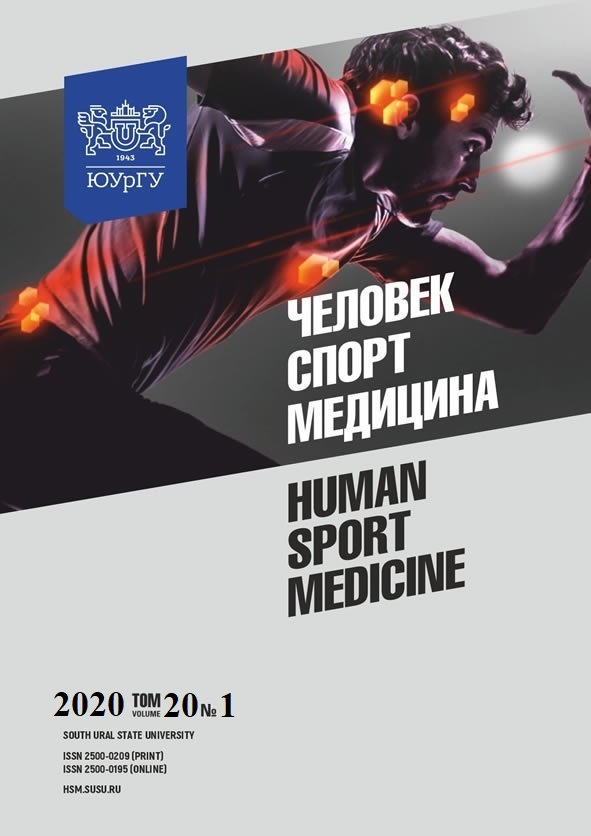THE CORRELATION BETWEEN MANUAL ASYMMETRY AND THE QUALITY OF BALL ROUTINE IN YOUNG GYMNASTS
Abstract
Aim. The article deals with establishing the correlation between lateral manual preference, manual technical asymmetry and the results of ball routine in young gymnasts. Materials and methods. Twenty gymnasts aged 7–8 years underwent tests to establish asymmetry through determining lateral manual preferences and assessing a ball routine performance. Non-parametric criteria and correlation analysis were used for data processing. Results. At the preparatory stage and at the stage of technique enhancement, the average level of the apparatus possession in the subgroups of gymnasts with different lateral manual preferences has statistically significant differences when performing technical elements with dominant and non-dominant hand (p ≤ 0.05). The correlation between lateral manual preferences and a ball routine performance in gymnasts was not revealed at the preparatory stage (ρ = –0.03) and was not significant at the stage of technique enhancement (ρ = 0.30). The coefficient of manual technical asymmetry has a significant correlation with the total amount of penalties for a ball routine technique at the preparatory stage (p < 0.05) and a highly significant correlation at the stage of technique enhancement (p < 0.01). Conclusion. Intergroup and individual differences in terms of symmetry/asymmetry should be taken into account for learning technical elements with the apparatus in young gymnasts.
References
References on translit
Copyright (c) 2020 Human. Sport. Medicine

This work is licensed under a Creative Commons Attribution-NonCommercial-NoDerivatives 4.0 International License.















